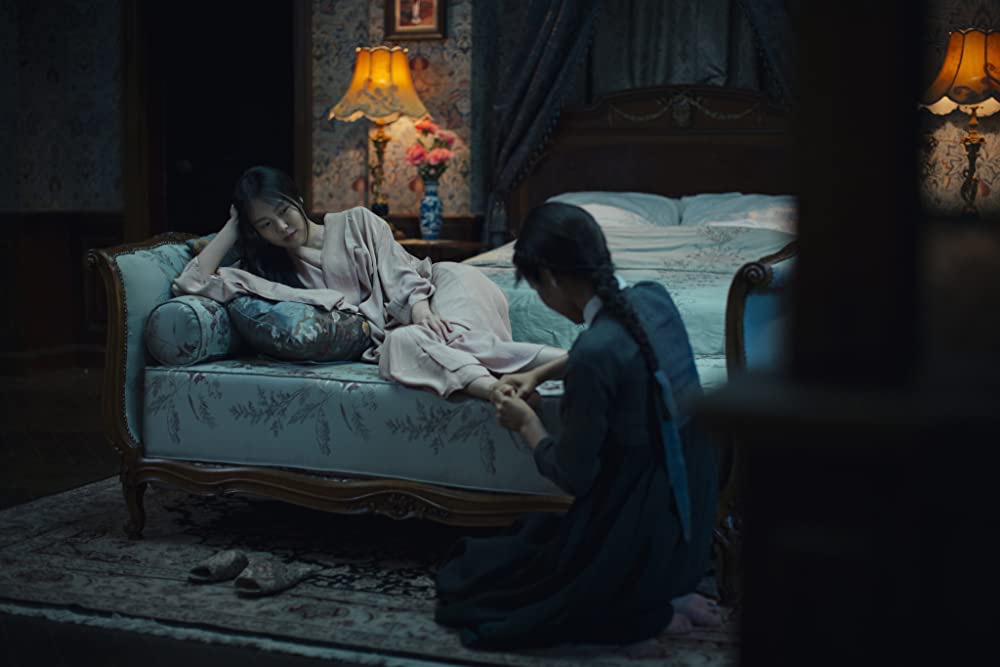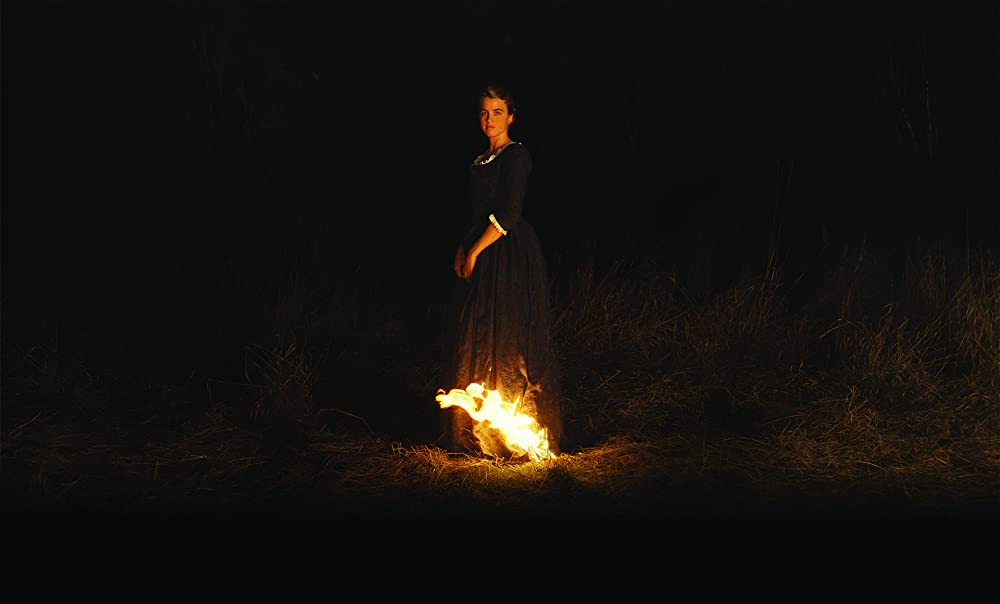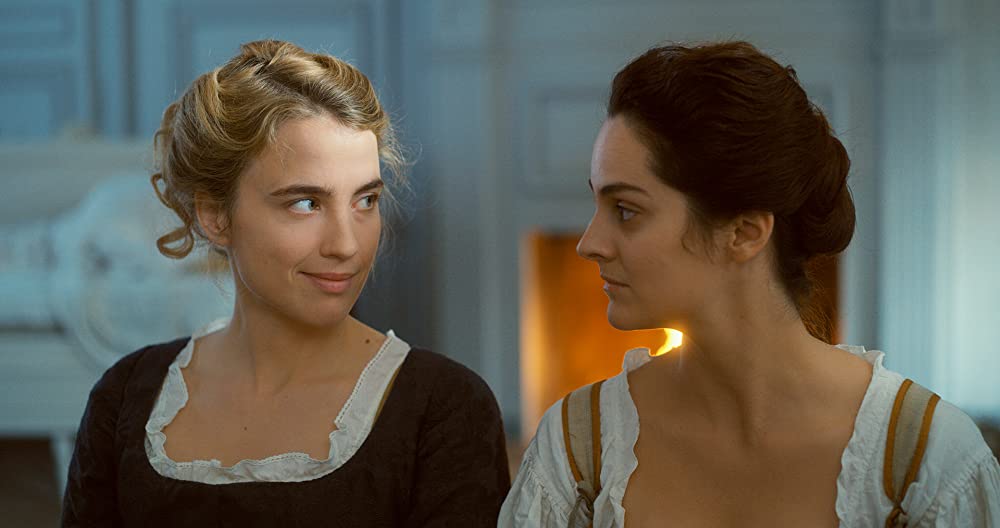By Isha Vibhakar, Second Year, Theatre and Film
Queer love has come a long way; what was once used as a sexual slur is now a buzzword for LGBTQ+ Pride. This linguistic recovery can be traced to the sexual stigmas and the resulting socially conditioned prejudices that have now been reformed to an extent where gay pride has garnered a cult following.
The regressive mindsets that dubbed LGBTQ+ as unconventional and dismissed lesbian love as ‘just a phase,’ has now been displaced by an all-inclusive, open to all social group where everyone is considered normal and equal. After all, ‘love is love’ and as a result, the bonds and relationships that emerge from here, are just as sacred as heterosexual relationships. Based on the recurring theme of an exploration of love that is replete in its anonymity and wistful yearning, this article will discuss how WLW films are not just about Victorian corsets.
Whilst placing the sapphic gaze at the centre of the narrative, the following two foreign-language films are historical period dramas that subvert genre conventions by portraying a queer feminist love story and a female saviour trope rescuing upper class heroines from their patriarchal shackles.
The Handmaiden (2016)

The Handmaiden is a Victorian tale of love and deception transplanted in 1930s Korea under Japanese colonial rule. Juxtaposing the original novel by Sarah Waters (Fingersmith) with Park Chan-wook’s literary adaptation in film, we come across the two conflicting yet co-existing themes: a lesbian writer’s ‘lesbo Victorian romp’ and an internationally acclaimed auteur whose male gaze may be considered problematic due to the lingering issues around the film’s jarring fascination with pornography.
However, when questioned about the film’s lingering sex scenes and a male gaze, Waters, defends the film as, “although it portrays women trapped by male structures and trapped within the limits of male-authored text, it ‘shows them escaping from those things or using them, using bits of them for their own pleasure”. Among its many accolades, The Handmaiden was in competition for the Palme d’Or at the 2016 Cannes Film Festival, and won the 2018 BAFTA Award for Best Film Not in the English Language. Waters’ novel itself made it to the bestseller list and was shortlisted for both The Man Booker and The Orange Prize – two of the most prestigious literary prizes in Britain, followed by a BBC television serial in 2005.
The film’s narrative focuses on the two transgressive female characters who are constantly subverting the heteronormative matrix through an erotic representation of lesbian sexuality. Another case in point is the assumed agency by Sook-hee, where she shatters male narratives and images about the female sexuality in the outright destruction of the library that is full of Japanese pornography that Lady Hideko is forced to recite publicly to audiences of men.

The film also renders a fetishistic and voyeuristic reading of Lady Hideko as she is an active subject to her male guests’ gaze in her sexual simulation on a wooden mannequin, suspended in air and her erotic literature reading. The explicit mention of ‘wetness’ in the film is visually translated by a steamy warm bath water through glittering surface of a deep red lollipop and Sook-hee’s glistening face looking up from between Hideko’s legs to the bare bodies exploring their desires through the oral lubrication of sex toys. The frequent dressing and undressing portrays a well-orchestrated cosplay where the exchange of dresses also renders a switch in their identities. This is a lot unlike the male guests who hid their perverted and pernicious desires underneath their formal attire.
While femininity is brimming with possibilities, all the male characters take a major hit; a result of their own undoing. The film also transpires irony and hypocrisy in them through the characters’ genesis. Uncle Kouzuki, a Korean by birth, bribed his way into translating for Japanese high officials. He’s even involved in the upbringing of his niece as she is a means to his end; he wants to marry her to steal her inheritance. There’s also an underlying reference to impotence by Count Fujiwara where he quips about the penis still being intact before death outlining the gender politics of the film.
Portrait of a Lady on Fire (2020)

Portrait of a Lady on Fire won Best Screenplay at Cannes and it was the first movie directed by a woman to be awarded a Queer Palm. Set on a lush island in Brittany at the end of the 1800s, Marianne is commissioned by a French noblewoman for a wedding portrait of her daughter, Héloïse (Adèle Haenel), to be sent to her potential husband in Italy.
The director Céline Sciamma essentially reworks the tale of Orpheus and Eurydice as a queer feminist love story. She says, “Orpheus and Euridyce is a myth that has been looked at by feminists a lot, because it’s basically how the male gaze can kill you”. While Marianne suggested that by turning around, Orpheus doesn’t make the lover's choice but the poet’s choosing to retain the memory of the beloved, Heloise counters by suggesting that maybe it was not only his choice – maybe it was she who said ‘turn around’. This is paralleled in the film as well where Heloise appears as a vision and asks Marianne to turn around before shutting the door on her.
LGBTQ+ History Month: why Amanita Caplan is the unsung hero of 'Sense8'
Rosamund Pike is dynamite in 'I Care A Lot'
Upon assuming roles of painter and model, their relationship takes on a formal structure that counterintuitively supports more intimacy and flirtation. Cinematically the film shows the two characters through communal perspectives, further drawing on the gaze. When Marianne sees Héloïse again, it is in another painting where Héloïse is holding a book turned to page 28, semiotically sending a message to Marianne that she hasn’t forgotten her.
In the final scene, we see Héloïse through Marianne’s perspective where she is so overwhelmed by a concert that she starts crying. Unlike Elio (Call Me By Your Name (2016)) who is lamenting in Visions of Gideon by questioning his summer love, Marianne reminisces her experience with Héloïse in Vivaldi’s piece Summer.
Featured: IMDb
What is your favourite film that showcases lesbian desire?









